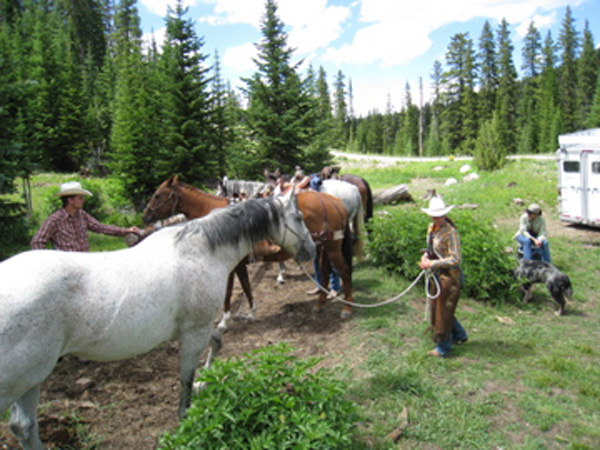
The following information about tying-up is courtesy of the equine veterinary experts at Hagyard Equine Medical Institute near Lexington, Kentucky.
Tying-up, or exertional rabdomyolysis, is a complex syndrome of events and imbalances that has many causes. The most common form of acute myositis is that which derives from a horse being exercised beyond its level of physical fitness. There is a build-up of metabolic wastes that are not removed rapidly enough and eventually cause changes in acid-base balance, energy metabolism, lactic acid levels, muscle pH, electrolyte balance, contractility mechanism, and blood flow while resulting in muscle fatigue, abnormal contracture, pressure, and pain.
Concurrent respiratory infections (EIV/EHV) and dietary imbalances (high carbohydrate diets, electrolytes) have been blamed as causative in acute, sporadic episodes of tying-up. Chronic or recurrent cases of exertional rhabdomyolysis can be frustrating to owners, trainers and veterinarians. These horses may have an underlying abnormality of muscle function that is hereditary in nature.
Most of these instances of chronic, recurrent tying-up have apparent environ- mental stimuli that tend to trigger the episode.
Chronic exertional rhabdomyolysis (CER) can be caused by a variety of factors. Electrolyte depletion due to dietary inadequacies or due to sweat losses during exercise can be a basis for developing a chronic condition. High dietary starch has been noted as a stimulus for repeated muscle problems. This may be due to excitability levels or may be related to interaction with glycogen storage within the muscle tissue.
Reproductive hormones have been implicated as causative for chronic exertional rhabdomyolysis.
Polysaccharide storage myopathy (PSSM) is a group of horses with CER that have an inherited abnormality associated with glycogen and polysaccharide storage in muscle. It is recognized in Warmbloods, Quarter Horses, Draft breeds, Paint horses and Appaloosas, and it is characterized by the accumulation of glycogen and an abnormal polysaccharide in skeletal muscle.
There is altered hexokinase binding to mitochondria, which leads to insufficient ATP production and tying-up. Most horses have a relatively calm demeanor and signs include reluctance to exercise, mild stiffness, exercise intolerance, poor performance, and muscle weakness or contractures.
Recurrent exertional rhabdomyolysis (RER) is caused by a genetic autosomal dominant trait. It is an intermittent defect in the regulation of muscle contraction and manifests as periods of tying up of varied severity. The condition tends to be more frequent in horses with a nervous disposition, or triggered by stimuli such as dietary starch, season of year, exercise duration, exercise intensity, and lameness.
Prevention of tying-up involves a variety of approaches that include nutrition, exercise management and recognition of the factors that may lead to myositis in your particular horse.
Working with your veterinarian can help to develop programs that will minimize the occurrence of tying-up.


